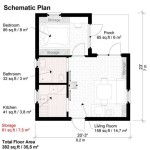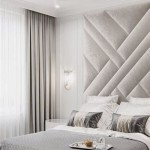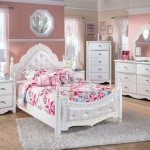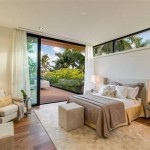Illuminating Your Sanctuary: A Guide to Selecting the Perfect Pair of Lamps for Your Bedroom
The bedroom, a space dedicated to rest and rejuvenation, requires thoughtful consideration when it comes to lighting. Adequate and well-placed lighting significantly impacts the ambiance, functionality, and overall comfort of the room. A pair of lamps for the bedroom is not merely a decorative element; it's an investment in creating a conducive environment for relaxation, reading, and winding down after a long day. From bedside tables to dressers, strategically positioned lamps offer task lighting for specific activities while contributing to the overall aesthetic appeal.
Selecting the right pair of lamps for your bedroom involves considering various factors, including the room's size and style, the intended use of the lamps, and the desired level of illumination. A well-chosen set of lamps can enhance the room's décor, improve functionality, and contribute to a more restful and inviting atmosphere. This article will explore the key considerations for selecting the ideal pair of lamps for your bedroom, ensuring a perfect blend of style, functionality, and comfort.
Key Point 1: Understanding the Purpose and Functionality of Bedroom Lamps
Before embarking on the selection process, it's crucial to identify the primary purpose of the lamps. Are they intended primarily for reading in bed, providing ambient lighting for relaxation, or serving as accent lighting to highlight specific features of the room? The answer to this question will significantly influence the type of lamps you choose, as well as their placement and light output.
If reading is a priority, consider lamps with adjustable arms or flexible necks that allow for focused light directed onto the reading material. Task lighting is essential in this scenario, requiring a brighter, more direct light source. Conversely, if the primary purpose is to create a relaxing ambiance, lamps with dimmer switches and softer, warmer light bulbs are more suitable. These lamps can cast a gentle glow, promoting a sense of calm and tranquility.
Furthermore, consider the functionality of the lamps in relation to other elements in the bedroom. For instance, if you have a desk or vanity area, you might want to choose lamps that provide adequate task lighting for these specific areas. If the bedroom is used for multiple purposes, such as working from home or pursuing hobbies, a combination of task lighting and ambient lighting options is ideal.
The size and shape of the lamps should also be considered in relation to available space on bedside tables or dressers. Overly large lamps can overwhelm a small space, while lamps that are too small may not provide sufficient light. Measuring the available space before making a purchase is essential to ensure a proper fit.
The functionality also extends to the practical aspects, such as the ease of use of the on/off switch and the length of the cord. Lamps with easily accessible switches are particularly convenient for bedside use, and a sufficiently long cord will prevent the need for extension cords, which can be unsightly and potentially hazardous.
Key Point 2: Exploring Different Styles and Designs to Match Your Bedroom Décor
Bedroom lamps are not just functional lighting fixtures; they are also important design elements that contribute to the overall aesthetic of the room. The style and design of the lamps should complement the existing décor and reflect your personal taste. There are numerous styles to choose from, ranging from traditional and classic to modern and minimalist, each offering a unique visual appeal.
Traditional-style lamps often feature ornate details, such as carved bases, fabric shades, and decorative finials. These lamps can add a touch of elegance and sophistication to a bedroom. Classic styles may incorporate elements such as porcelain, brass, or wood, creating a timeless and enduring look. These styles often pair well with traditional furniture and bedding.
Modern and contemporary lamps, on the other hand, tend to have clean lines, simple shapes, and minimalist designs. They often feature materials such as metal, glass, or acrylic, and may incorporate geometric patterns or abstract forms. These lamps can add a touch of sleekness and sophistication to a modern bedroom. They are best suited for rooms with modern furniture and décor.
For a more eclectic or bohemian style, consider lamps with unique shapes, textures, or patterns. These lamps can add a touch of personality and individuality to the room. Materials such as rattan, bamboo, or ceramic can create a natural and organic feel. Consider lamps with colorful shades or unconventional designs can also add a playful and artistic touch.
Consider the color palette of your bedroom when selecting the color of the lamps. Neutral colors such as white, beige, or gray are versatile and can complement a wide range of décor styles. However, you can also use lamps as a way to introduce pops of color or to tie together different elements in the room. For example, if you have a blue accent wall, you might choose lamps with blue shades to complement the wall color.
The material of the lamp can also contribute to the overall style and feel of the room. Metal lamps can add a touch of industrial chic, while wooden lamps can create a warm and inviting atmosphere. Glass lamps can add a sense of airiness and lightness, while ceramic lamps can add a touch of texture and character.
Key Point 3: Considering Light Output and Bulb Selection for Optimal Ambiance
The type of light bulb used in your bedroom lamps can have a significant impact on the overall ambiance of the room. Different types of bulbs emit different colors and intensities of light, which can affect how you feel and perceive the space. Selecting the right bulbs is essential for creating a comfortable and relaxing environment.
Warm white light bulbs are generally recommended for bedrooms, as they emit a soft, yellowish glow that promotes relaxation and calmness. These bulbs mimic the light of a sunset, which signals to the body to prepare for sleep. They are ideal for creating a cozy and inviting atmosphere.
Cool white light bulbs, on the other hand, emit a brighter, bluer light that is more similar to daylight. These bulbs are better suited for tasks that require focus and concentration, such as reading or working. However, they can be too harsh for a bedroom, especially in the evening. They are less suitable for creating a relaxing ambiance.
LED bulbs are a popular choice for bedroom lamps due to their energy efficiency, long lifespan, and versatility. They are available in a wide range of colors and intensities, allowing you to customize the lighting to your preferences. They also produce very little heat, which is an added benefit in a bedroom.
Incandescent bulbs are another option, but they are less energy-efficient and have a shorter lifespan than LED bulbs. They also produce more heat, which can be a concern in a small space. However, some people prefer the warm, natural light emitted by incandescent bulbs.
Halogen bulbs are similar to incandescent bulbs but are more energy-efficient and have a longer lifespan. However, they also produce a significant amount of heat and are not as energy-efficient as LED bulbs.
In addition to the type of bulb, also consider the wattage or lumen output. Wattage measures the amount of energy consumed by the bulb, while lumens measure the amount of light emitted. For bedroom lamps, a wattage of 40-60 watts or a lumen output of 400-800 lumens is generally sufficient. However, this may vary depending on the size of the room and the intended use of the lamps.
Consider lamps with dimmer switches to allow you to adjust the light output to your desired level. This is especially useful for creating a relaxing ambiance in the evening. Dimmer switches can also help conserve energy by reducing the amount of power consumed by the bulbs.
When selecting light bulbs for your bedroom lamps, consider the color rendering index (CRI). The CRI measures how accurately a light source renders colors compared to natural sunlight. A higher CRI indicates more accurate color rendering. For bedroom lamps, a CRI of 80 or higher is recommended.
By carefully considering the light output and bulb selection, you can create a bedroom lighting scheme that is both functional and aesthetically pleasing, enhancing your relaxation and well-being.
Ultimately, selecting the perfect pair of lamps for your bedroom is a personal decision that should be based on your individual needs and preferences. By considering the factors outlined in this article, you can make an informed choice that will enhance the beauty, functionality, and comfort of your bedroom.

360 Lighting Carlton Modern Table Lamps 28 Tall Set Of 2 Swirling Brown Faux Marble White Tapered Drum For Bedroom Living Room Bedside Nightstand

Pair Of Bedroom Lamps

Pair Of Touch Lamps Damart Co

360 Lighting Modern Table Lamps 25 High Set Of 2 With Usb Charging Port Brass Metal Beige Drum Shade For Bedroom Living Room House Desk Bedside Home

Pair Of Table Lamps Bedroom 1930s Beautiful Period Home Style Etsy

Our 8 Favorite Bedside Lamps Of 2025 Reviews By Wirecutter

2 X Angus Grey Table Lamps With Shades Valuelights

Valuelights Memphis Pair Of Cream Twist Table Lamps With A Fabric Lampshade Bedroom Bedside Light

360 Lighting Gilson 24 1 2 High Modern Coastal Glam Table Lamps Set Of Gold Textured Blue Finish Ceramic Fabric White Shade Living Room Bedroom Bedside Nightstand House Office Home Reading Macy S

Pair Of Ceramic Table Lamps Living Room Or Bedroom Lighting Etsy








